A malfunctioning door knob can be a common yet frustrating household issue. Whether it’s a loose handle, a stuck latch, or an unresponsive lock, these problems can disrupt daily routines and compromise home security. Fortunately, many door knob issues can be resolved with basic tools and a bit of know-how.
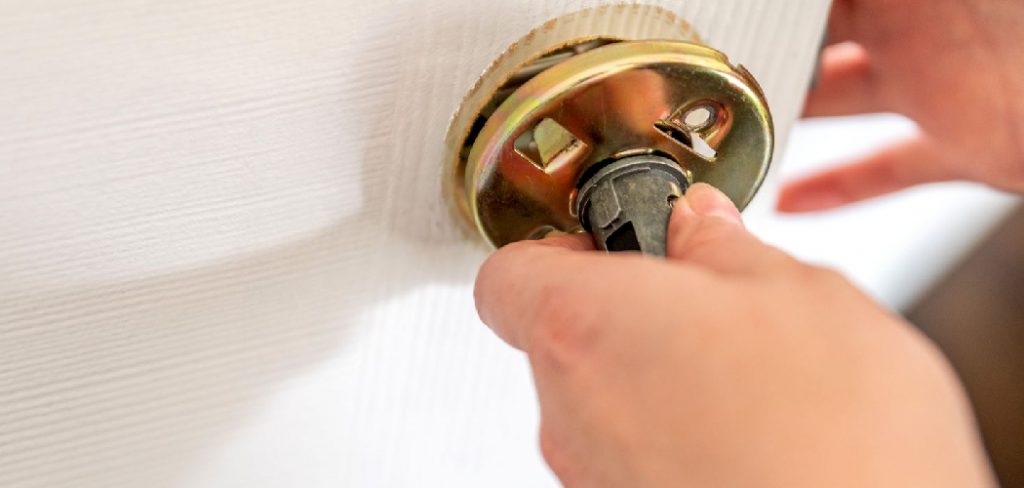
This guide on how to repair door knob issues will walk you through the most common door knob problems and provide step-by-step instructions for fixing them, ensuring your doors function smoothly and securely.
Why Is My Door Knob Malfunctioning?
Before diving into the steps for repair, it’s important to understand why your door knob is malfunctioning. Some common reasons include:
Loose Screws or Parts:
Over time, the constant use of a doorknob can cause screws and other parts to become loose. This can lead to wobbly handles or difficulty turning the knob.
Worn Out Components:
Door knobs are made up of several components, such as springs and levers, that can wear out over time. This can result in a latch that won’t catch or a lock that won’t turn.
Misaligned Latch:
If your door knob is difficult to turn or won’t open at all, the issue could be caused by a misaligned latch. This happens when the latch doesn’t properly fit into the strike plate on the door frame.
Tools You’ll Need
Before attempting to fix your door knob, gather the necessary tools:
- Screwdriver (Flathead or Phillips Depending on Your Door Knob)
- Pliers
- Lubricant (Such as Wd-40)
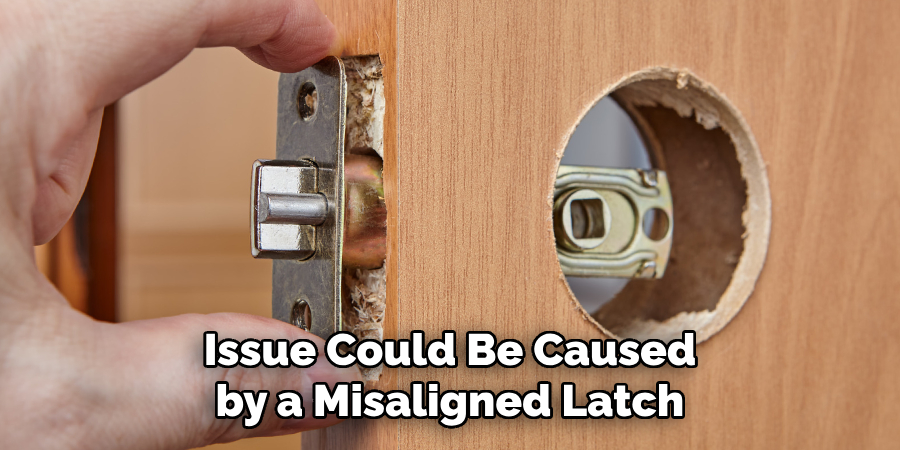
8 Steps on How to Repair Door Knob Issues
Step 1: Tighten Loose Screws
The first step in repairing a loose door knob is to tighten any screws that may have come loose. Begin by identifying the type of screws holding the door knob in place: they are typically either flathead or Phillips screws. Use the correct type of screwdriver to gently tighten each screw. Be careful not to overtighten, as this can strip the screws or damage the door knob components.
If the screws are stripped or damaged, consider replacing them with new ones to ensure a secure fit. Regularly checking and tightening these screws can help prevent further issues in the future.
Step 2: Lubricate the Door Knob
If your door knob is difficult to turn or feels sticky, it may be due to lack of lubrication. Using a lubricant, such as Wd-40, spray a small amount into the keyhole and around the latch mechanism. This should help loosen any debris or build-up that may be causing issues.
You can also use a graphite powder lubricant for longer lasting results. Simply insert the nozzle into the keyhole and squeeze out a small amount of powder, then turn the key to distribute it evenly.
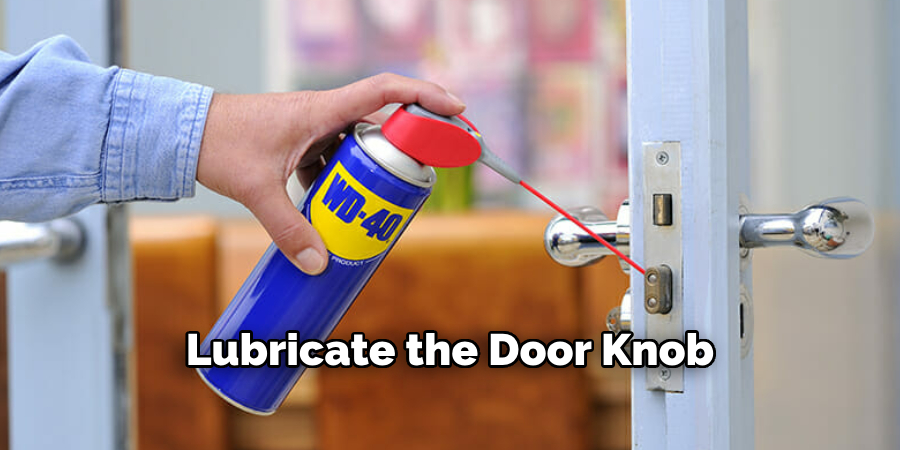
Step 3: Check Latch Alignment
If your door knob is difficult to turn or won’t open at all, the issue may be caused by a misaligned latch. To check this, remove the door knob by unscrewing it from both sides of the door. Once removed, close the door and try to slide in the latch. If it doesn’t easily align with the strike plate on the door frame, you will need to adjust its position.
But if the latch is properly aligned and still won’t turn, it may be due to worn-out components. In this case, skip to Step 6 for further instructions.
Step 4: Adjust the Latch Position
To adjust the position of a misaligned latch, use pliers to gently bend the metal tab attached to the latch. This will allow you to move the latch up or down as needed. Once in the desired position, test it by inserting it into the strike plate and closing and opening the door.
Repeat this process until the latch properly aligns with the strike plate and easily moves in and out. It may take a few adjustments to find the perfect fit.
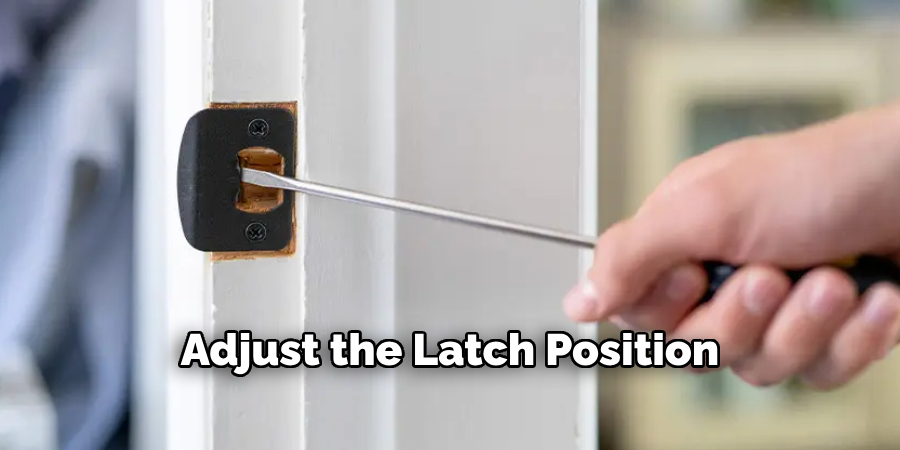
Step 5: Reattach Door Knob
Once you have adjusted the latch and ensured it aligns correctly with the strike plate, it’s time to reattach the door knob. Begin by placing the door knob back into position on both sides of the door, ensuring the spindle is correctly aligned with the latch mechanism. Insert the screws into the designated holes and use the appropriate screwdriver (flathead or Phillips, depending on your doorknob type) to tighten them securely.
As you tighten the screws, make sure the door knob remains level and properly aligned. Test the doorknob by turning it and checking that the latch moves smoothly in and out of the strike plate. If the doorknob functions correctly, then reattaching has been successful. If there are still issues, you may need to repeat the adjustments from the previous steps until everything operates as it should.
Step 6: Replace Worn Components
If your door knob is still malfunctioning after following the previous steps, the issue may be due to worn-out components. This can include springs, levers, or other parts that have become damaged over time. To fix this problem, you will need to purchase a replacement kit for your specific door knob brand and type. It’s important to note that not all door knobs are interchangeable, so make sure to get the correct replacement kit.
Follow the instructions on how to repair door knob issues provided with the replacement kit to disassemble and replace any necessary components. Once completed, reattach the doorknob and test it again. If everything works properly, then you have successfully replaced any worn components.
Step 7: Fix a Jammed Door Knob
In some cases, the issue with a door knob can be due to a jammed lock. This can occur when the key is inserted and turned too forcefully, causing the pins inside the mechanism to become stuck. To fix this problem, you will need to use a lubricant such as Wd-40 or graphite powder (as mentioned in Step 2) to help loosen the pins.
Insert the nozzle into the keyhole and spray or squeeze out a small amount of lubricant. Then wiggle and turn your key gently until it unlocks the door knob. If this doesn’t work, try using pliers to gently pull on the key while turning it. Once unlocked, repeat Step 6 for any necessary component replacements.
Step 8: Call a Professional
If you have followed all the steps and your door knob is still giving you trouble, it may be time to call a professional locksmith. They will have the necessary tools and expertise to diagnose and fix any door knob issues that may be beyond your capabilities. It’s always better to seek help from a trained professional than to risk causing further damage.
Remember, regular maintenance of your door knobs can prevent many potential problems in the future. Not only will this save you time and money, but it will also ensure the safety and security of your home or office. So take care of those troublesome door knobs before they become bigger issues!
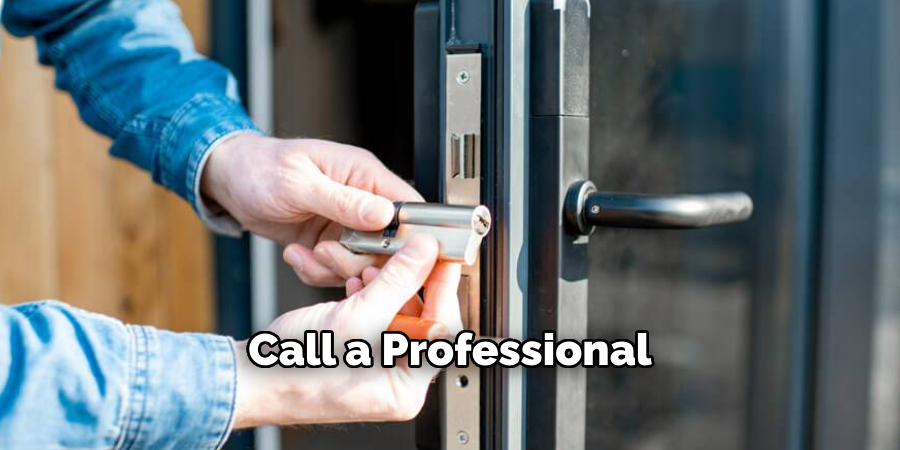
Frequently Asked Questions
Q: How Often Should I Perform Maintenance on My Door Knobs?
A: It is recommended to check and tighten screws, lubricate the mechanism, and make any necessary adjustments at least once a year. It’s also important to regularly check the overall condition of your door knobs and replace any worn-out components as needed.
Q: What Types of Lubricants Should I Use?
A: For basic maintenance and lubrication, Wd-40 or graphite powder are both suitable options. However, for long-term results and smoother operation, a silicone-based spray lubricant specifically designed for door knobs may be a better choice.
Q: Can I Fix a Broken Door Knob Myself?
A: It depends on the severity of the issue. If it is a simple fix like repositioning the latch or replacing screws, then it can often be done at home with some basic tools and knowledge. However, if there are more complex issues or necessary replacements, it may be best to call a professional locksmith for assistance.
Q: How Do I Know If My Door Knob Needs Replaced?
A: Signs that your door knob may need to be replaced include difficulty turning the key or handle, excessive wobbling, or visible wear and tear on components. It’s also important to replace your doorknob if it becomes damaged in any way or if you have recently moved into a new home and want to ensure the security of your locks. Remember, regular maintenance can prolong the lifespan of your door knobs and prevent the need for frequent replacements.
Conclusion
Maintaining your door knobs is crucial to ensuring the security and smooth operation of your doors. By following the steps outlined in this guide on how to repair door knob issues, you can address common issues such as loose screws, lack of lubrication, misaligned latches, and worn components.
Regular checks and timely maintenance can prevent small problems from escalating into more significant, costly repairs. However, if you find that your efforts are not resolving the issue, don’t hesitate to seek the assistance of a professional locksmith.
Proper care and attention to your door hardware will provide peace of mind and contribute to the overall safety and functionality of your home or office. Remember, a well-maintained door knob is a key part of your security system, so make it a priority in your home maintenance routine.
About
Safety Fic is a distinguished figure in the world of Diy design, with a decade of expertise creating innovative and sustainable Diy solutions. His professional focus lies in merging traditional craftsmanship with modern manufacturing techniques, fostering designs that are both practical and environmentally conscious. As the author of diy, Safety Fic delves into the art and science of Safety Fic-making, inspiring artisans and industry professionals alike.
Education RMIT University
(Melbourne, Australia) Associate Degree in Design (Safety Fic) Focus on sustainable design, industry-driven projects, and practical craftsmanship. Gained hands-on experience with traditional and digital manufacturing tools, such as CAD and CNC software.
Nottingham Trent University
(United Kingdom) Bachelor’s in diyfastly.com and Product Design (Honors) Specialized in product design with a focus on blending creativity with production techniques. Participated in industry projects, working with companies like John Lewis and Vitsoe to gain real-world insights.
Publications and Impact
In diy, Safety Fic his insights on indoor design processes, materials, and strategies for efficient production. His writing bridges the gap between artisan knowledge and modern industry needs, making it a must-read for both budding designers and seasoned professionals.
